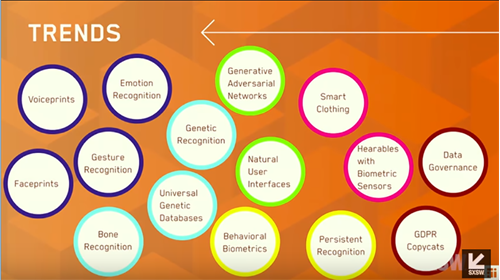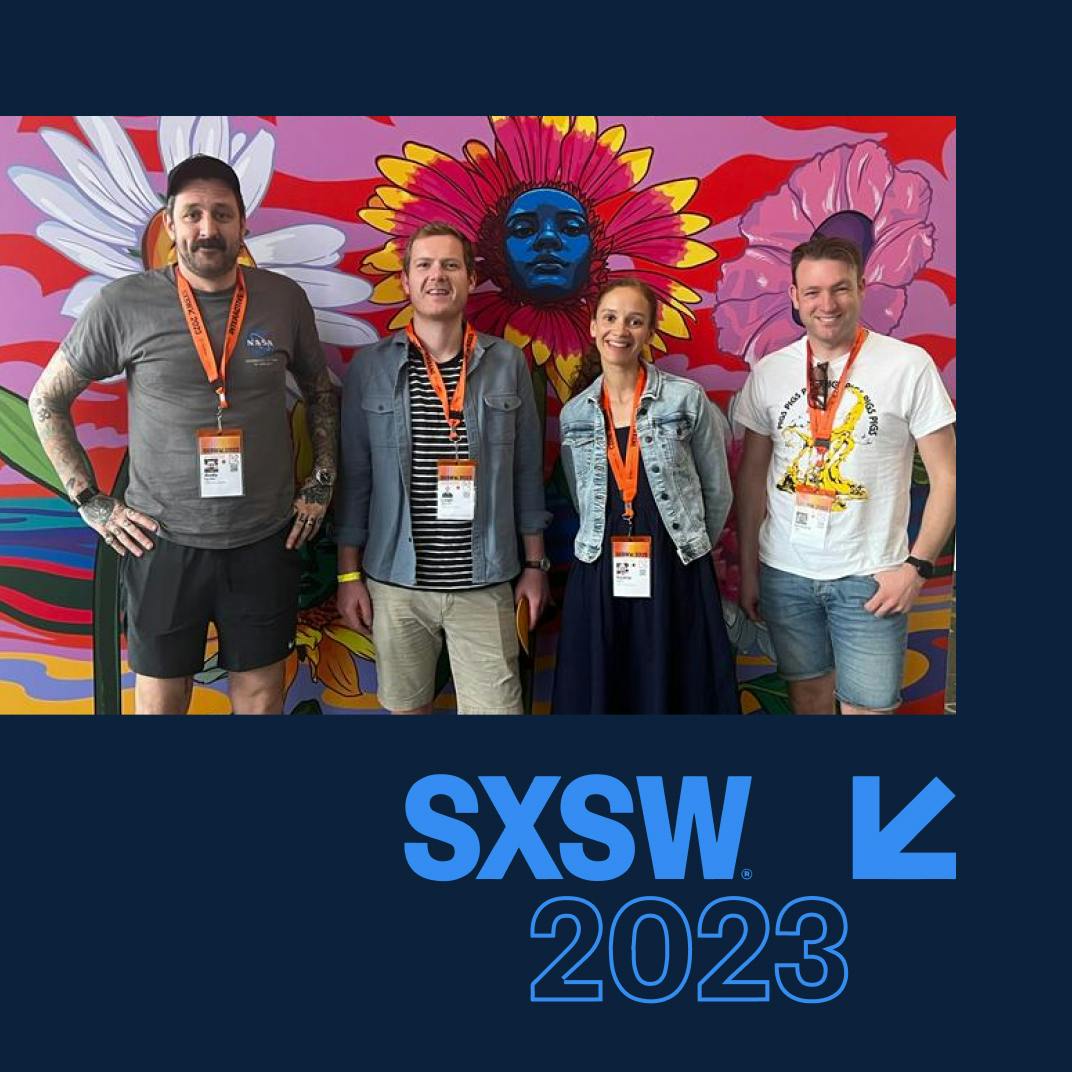
We attended a fascinating talk by Amy Webb who is a professor of strategic foresight at the NYU Stern school of Business, on the 2019 Emerging Tech Trends Report.
This covered how the report connects 315 current tech trends and then future 2034 scenarios and the likelihood of these playing out.
We also attended a workshop on building APIs (Application programming interfaces) for Growth from the authors of the O’Reilly book Designing Web APIs Brenda Jin and Saurabh Sahni; who are both currently working for Slack. This covered the fundamentals of APIs with real world is examples and bugs from Slacks code. The team handed out their book throughout the workshop. In addition to going into the different types of APIs and their implementation, it also covered some any tips to market your APIs and reach the masses.
‘the only way we are going to get to a place that we’re all happy in the future is if we’re all making smarter decisions in the present’
– Amy Webb
Whilst at SXSW 2019 we attended a fascinating talk by Amy Webb who is a professor of strategic foresight at the NYU Stern school of Business, on the 2019 Emerging Tech Trends Report. She has given successive talks on the Tech Trend Report at the last two SXSW events. This overview of the 2019 Emerging Tech Trends Report; builds out scenarios based on connections between 315 keys tech trends. Amy went through 16 of the trends highlighted in the report grouped into Cognitive Services (Dark Blue), Genomics (Light Blue), Natural UIs (Light Green), Biometrics (Yellow), Wearables(Pink) and Data Privacy (Dark Green); these are show below:

She then ran through several real work examples for each of the 16 trends. I thought some of the most interesting of which was around Biometrics and Wearables. Amy gave an example that has recently been in the press, Walmart looking to put Biometric sensors in shopping trolleys to read customers temperature, heart rate, the speed and force with which you push the trolley etc. Then Walmart could then determine any given customers emotional state, whether they are angry or frustrated; as a result, they could send a shop assistant to come help. On the wearables front;
Apple are looking at Biometric yoga leggings. How good would it be to know if you are doing the down dog correctly?
The report itself contains 48 hypothetical future scenarios for the year 2034 based on the links between the 315 trends. Each scenario contains an Action Matrix based on the degree of Catastrophic certainty and impact; to advise your organisation whether it should Act Now, Keep Vigilant Watch, Inform Strategy or Revisit Later.
The scenarios are then split out into three possible framings ‘Optimistic’, ‘Neutral’ and ’Catastrophic’. Then the report predicts the likelihood of each framing becoming reality.She then went through several of the scenarios from the report. One that really caught my imagination was around biometrics. Here are the three framings and likelihood for this trend in the year 2034:
Optimistic (10% likely): Data collection is transparent, people understand how, when and where we are being monitored. It’s the end of passwords! No more two-factor authentication! No more boarding passes, physical credit cards, or driver’s licenses! Biometric scanning is safe and secure. Technology enriches our lives! Privacy is dead… but we’re ok.
Neutral (50% likely): We preserve the status quo. Consolidation follows. Biometrics data gets locked into just a few technology providers, our data isn’t interoperable – WE aren’t either. Lots of bugs, authentication is annoying, we get hacked in new ways
Catastrophic (40% likely): Companies actively work AGAINST protecting our biometric data. We have no idea where our data is or who owns it. Regulation comes fast, Splinternets give way to protected biodata zones. Walmart’s shopping carts can’t cross state lines. There is a new economic and social class system. Rich people buy premium services to anonymize their biodata. Everyone else has their biodata mined, refined and productised. Authoritarian countries create universal genetic databases to monitor their citizens.
Smart homes: Who rules the roost?
I found the idea of the utopian optimistic future, shame it’s the least likely of the three framings! The most terrifying scenario looks at our future smart homes, here again are the framings and the likelihoods:
Optimistic (0% likely): Our devices work across platforms and are truly interoperable. Our families intermingle with Google, Amazon and Apple easily. They help us save time and energy. We are nudges into better, healthier lifestyles. Smart homes are safe and fun!
Neutral (30% likely): We continue to this path without big changes. We soon realize that we can’t change our home / office / school operating system the same way we do our mobile OS’s (Even that is hard!) We’re frustrated, spending more money than we want and have very little choice.
Catastrophic (70% likely): You’re living in either a Google, Amazon or Apple home – and so is all of your data. You don’t understand how decisions are being made about and for you. Your smart home makes decisions that you wouldn’t. The microwave decides you should be on a diet and won’t let you eat popcorn. The washer decides you can get another day out of those jeans. Your garage decides you should walk to work.
This is scary right; but I have to agree with the report it’s hard to see anything but a catastrophic future without more corporations between the worlds tech giants; history has taught us this is extremely unlikely.
In the future its highly likely that all of our lives will be controlled by the big 9 global tech giants (Baidu, Alibaba, Tencent, Amazon, Google, Microsoft, Apple, Facebook and IBM) and there is very little we can do about it.
If you were as fascinated as me by this report; the full report can be views or downloaded from here.



















